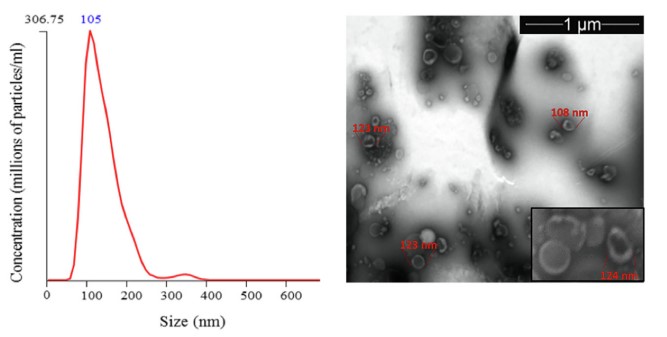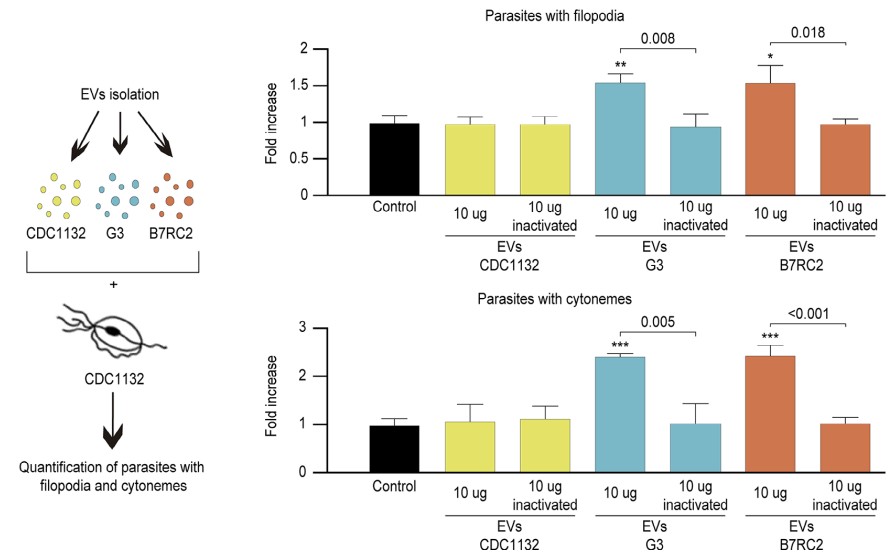The study of cellular communication, internalization, and transported cargo in the Trichomonas-derived exosomes contributes to a better understanding of Trichomonas pathogenesis. Creative Biolabs can provide exosome characterization and tailored research services to aid in the investigation of the parasite's biological features.
-
RNA sequencing of Trichomonas-derived exosomes.
RNA sequencing revealed the presence of short RNAs formed from tRNA fragments that were strongly enriched in Trichomonas-derived exosomes and mostly half of 5′ tRNAs, with more repetitive data than rRNA or CD fragments in libraries.
-
The development of clusters is regulated by parasitic strains.
It is observed that Trichomonas vaginalis adherent strains develop membrane protrusions with various types of filamentous structures from the surface, the abundance of which varies according on the strain's phenotype. Furthermore, the bigger the number of parasites with cytonemes, the more parasite clusters formed, with closed ends touching the surface area of nearby parasites.
-
Assessment of the role of Trichomonas-derived exosomes in parasite-parasite interactions.
It was discovered that the presence of different parasite strains was more likely to result in the formation of cytonemes than exposure to the same strains and that this effect may not be related to physical cellular contact, but rather to paracrine signaling. Adding exosomes from different strains directly to the Trichomonas vaginalis strain resulted in an increase in cytonemes and filopodia production.
-
Exosomes derived from several Trichomonas vaginalis sources were shown to contain specific protein components.
Proteomic profiling and hierarchical clustering analysis revealed that different Trichomonas derived exosomes contained different types of proteins, whereas proteins involved in the regulation of cytonemes and filopodia formation, as well as parasite biological processes, were highly conserved. Exosomes from distinct Trichomonas vaginalis sources contained other highly unique proteins that imparted specific actions in the communication of different strains, in addition to the conserved proteins.
-
Communication between mixed strains of Trichomonas vaginalis mediated by Trichomonas-derived exosomes influenced the parasite's capacity to attach to the host.
The presence of Trichomonas-derived exosomes-mediated mixed Trichomonas vaginalis strains boosted cytoneme production and the parasite's ability to bind to host cells, according to microscopic quantification. In interaction with host cells, these cytonemes protruded from the flagellar bases and cell bodies of Trichomonas vaginalis and expanded into thin branches.

 Fig. 1 Trichomonas-derived exosome characterization.1
Fig. 1 Trichomonas-derived exosome characterization.1
 Fig. 2 Treatment with Trichomonas-derived exosomes promoted the development of cytonemes and filopodia in parasites of different strain types.2
Fig. 2 Treatment with Trichomonas-derived exosomes promoted the development of cytonemes and filopodia in parasites of different strain types.2









